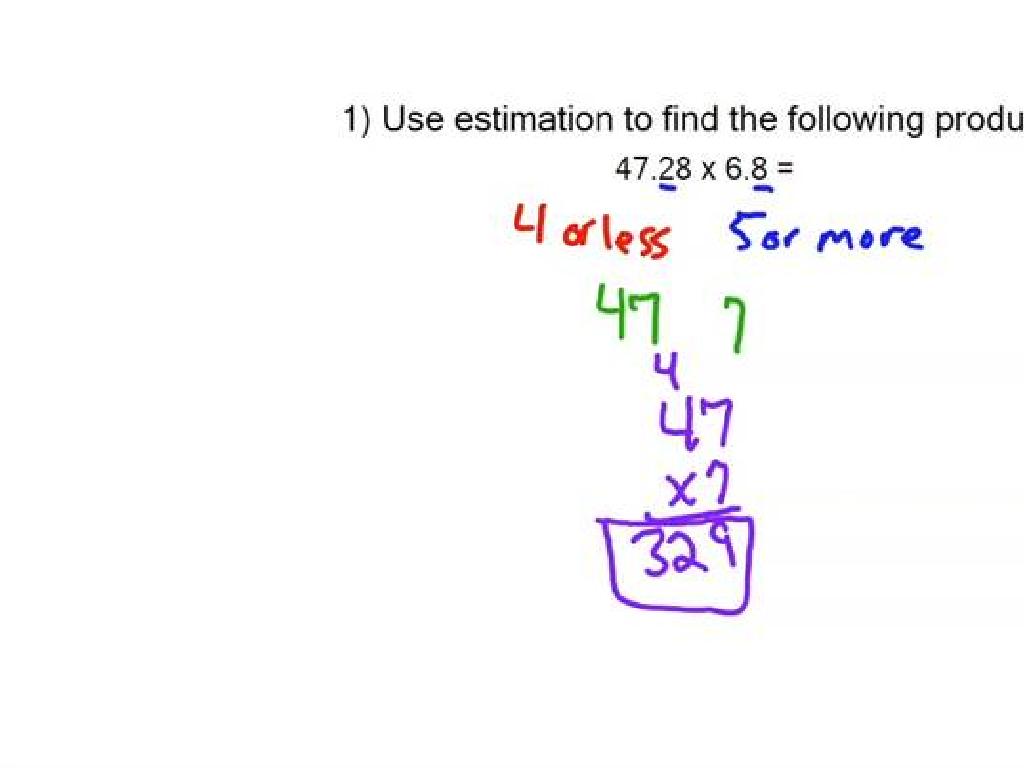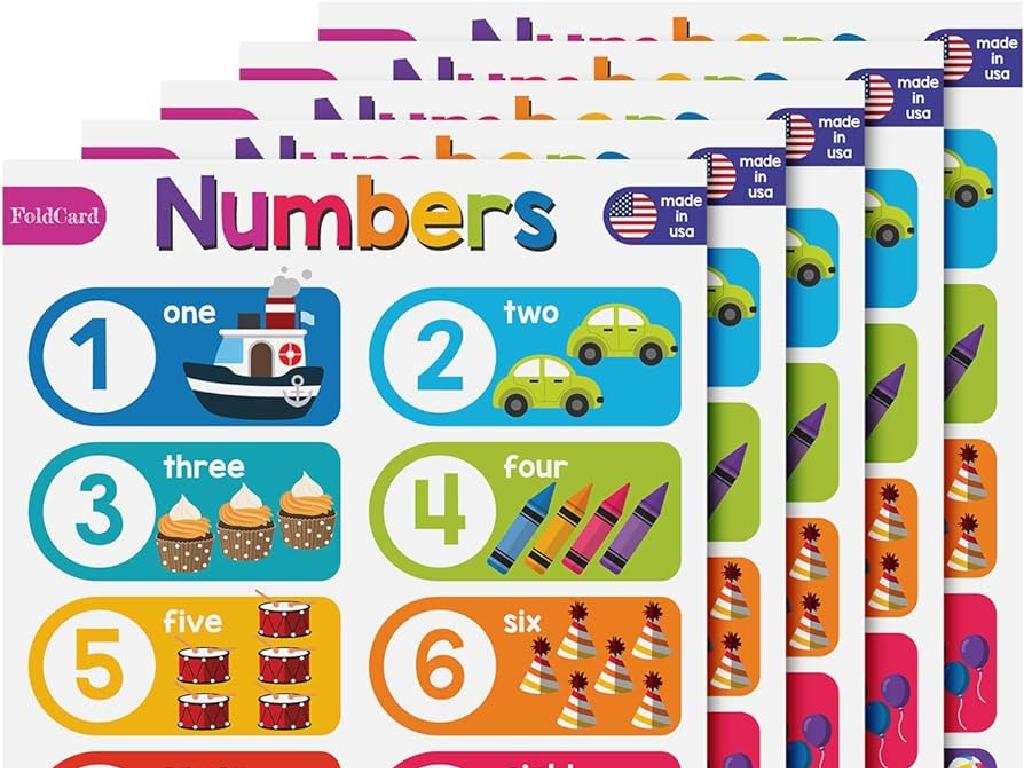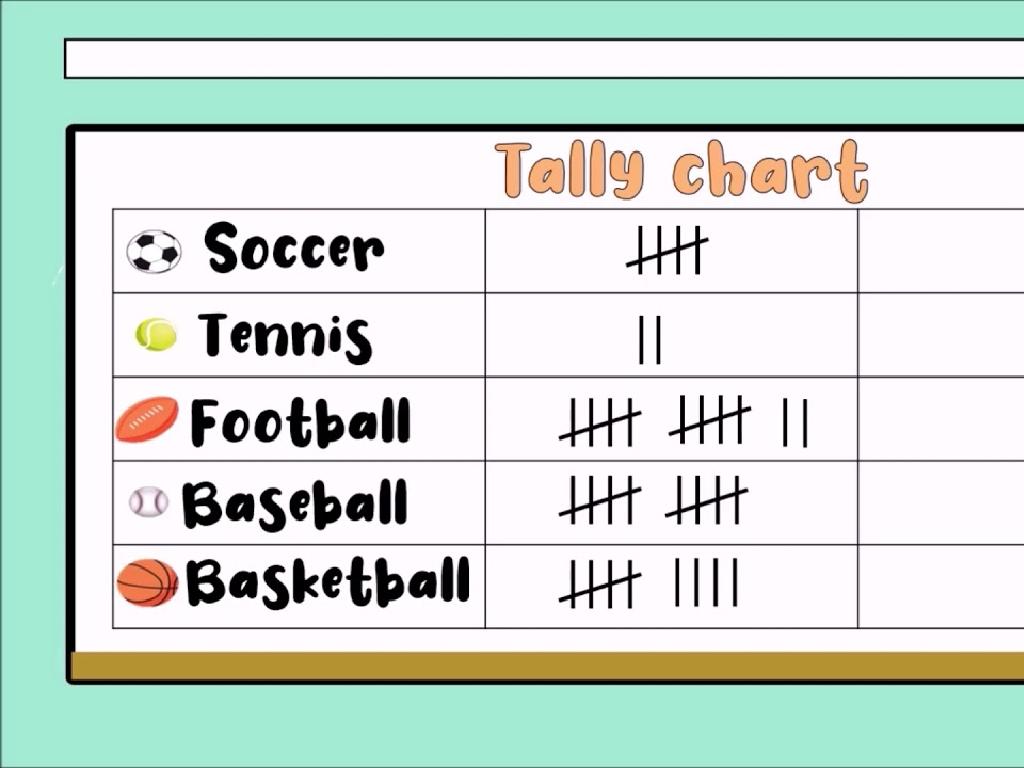Multiply Two Multiples Of Ten: Word Problems
Subject: Math
Grade: Fourth grade
Topic: Multiply By Two-Digit Numbers
Please LOG IN to download the presentation. Access is available to registered users only.
View More Content
Multiplying Multiples of Ten
– Multiplication with tens basics
– Understand multiplying numbers like 10, 20, 30, etc.
– Usefulness of multiplying by tens
– It simplifies larger calculations & saves time
– Real-life multiplication scenarios
– Buying in bulk, distance traveled in tens of kilometers
– Practice with word problems
– Solve problems involving everyday situations
|
This slide introduces students to the concept of multiplication with multiples of ten, which is a foundational skill in mathematics. Emphasize that this method is a shortcut that makes calculating larger numbers easier and more efficient. Provide relatable examples such as purchasing items in bulk or calculating long distances to illustrate the practicality of this skill. Encourage students to think of other examples where they might use multiplication with tens. Conclude with word problems that apply this concept, ensuring to include a variety of scenarios to help solidify their understanding.
Multiplying Multiples of Ten
– Understanding multiples of ten
– Numbers like 10, 20, 30… are multiples of ten.
– Identifying multiples of ten
– Look for numbers ending in zero.
– Recognizing patterns in multiplication
– When we multiply by 10, the number gets one zero added to the end.
– Practicing with word problems
– Solve problems using these patterns.
|
This slide introduces the concept of multiples of ten and how to identify them, which is crucial for understanding multiplication of larger numbers. Emphasize that multiples of ten are easily recognizable as they end in zero. Show the pattern that emerges when multiplying by ten – each time, a zero is added to the number, making multiplication simpler. Provide word problems that allow students to apply this knowledge, reinforcing their understanding through practical examples. Encourage students to explain the patterns they see and to use these patterns to solve multiplication problems efficiently.
Multiplication Vocabulary
– Understanding ‘Factors’ and ‘Product’
– ‘Factors’ are numbers we multiply. ‘Product’ is the result.
– Using multiplication terms in problems
– Words like ‘times’, ‘of’, and ‘multiplied by’ signal multiplication.
– Examples in sentences
– ‘Sally has 4 bags with 10 apples each, how many apples in total?’
– Practice with word problems
|
This slide introduces students to key vocabulary in multiplication: factors, product, multiply, and multiples. Explain that factors are the numbers we multiply together, and the product is the result of this multiplication. Emphasize the use of multiplication language in word problems, such as ‘times’, ‘of’, and ‘multiplied by’. Provide examples of how these terms are used in sentences to describe multiplication situations. For instance, if Sally has 4 bags with 10 apples in each, we multiply the number of bags (4) by the number of apples per bag (10) to find the total number of apples. Encourage students to practice by creating their own sentences using multiplication vocabulary. The goal is for students to become comfortable with these terms so they can easily identify and solve multiplication word problems.
Multiplying Two Multiples of Ten
– Steps to multiply multiples of ten
– Count zeros, multiply numbers, then add zeros back
– Use place value knowledge
– Understand tens and ones to make multiplying easier
– Example problem: 20 x 30
– Multiply 2 x 3 to get 6, then add two zeros for 600
|
This slide introduces the concept of multiplying two multiples of ten, which is a foundational skill in arithmetic. Start by explaining the steps: first, count the total number of zeros in both numbers, multiply the non-zero digits, and then add the zeros back to the product. Emphasize the importance of place value as it simplifies the process by reducing the problem to a one-digit multiplication followed by appending zeros. Use the example 20 x 30 to illustrate the concept: multiply 2 by 3 to get 6, and since there are two zeros in the original numbers, the final answer is 600. Encourage students to practice with different multiples of ten to gain confidence in this method.
Multiplying Multiples of Ten: Word Problems
– Carefully read the problem
– Understand what the question asks
– Find numbers and their meaning
– For example, ’30 baskets of 20 apples each’ means 30 x 20
– Write the multiplication equation
– Use the numbers to form an equation like 30 x 20 = ?
|
This slide is aimed at teaching students a systematic approach to solving word problems involving multiplication of multiples of ten. Emphasize the importance of reading the problem thoroughly to understand the scenario. Guide students to identify key numbers and what they represent in the context of the problem. For instance, ’30 baskets of 20 apples each’ indicates a multiplication of 30 times 20. Once the numbers are identified, instruct students to write down the multiplication equation that represents the problem. Encourage them to solve the equation step by step. Provide several examples and practice problems to ensure students are comfortable with the process. Remember, the goal is to build their confidence in translating word problems into mathematical equations.
Multiplying Multiples of Ten: Word Problems
– Example 1: School Supplies
– If 5 classes need 20 pencils each, how many pencils in total?
– Example 2: Planting Trees
– A gardener plants 30 trees in 10 rows. How many trees in each row?
– Steps to solve the problems
– Solve together as a class
– We’ll work through the examples as a group activity.
|
This slide introduces students to practical applications of multiplication with multiples of ten through word problems. Start with the school supplies example, asking students to calculate the total number of pencils needed for 5 classes if each class requires 20 pencils. Then, move on to the planting trees example, where students will determine how many trees are in each row if a gardener plants 30 trees in 10 rows. Emphasize the steps to solve these problems: understanding the question, identifying the numbers to multiply, and performing the multiplication. Finally, solve the problems together, encouraging participation and demonstrating problem-solving strategies. This interactive approach helps students apply multiplication concepts to real-life scenarios and reinforces their understanding of the topic.
Practice Time: Multiplying Multiples of Ten
– Solve word problems individually
– Pair up to compare answers
– Share your solution and understand your partner’s approach
– Discuss various solving methods
– Are there shortcuts or different strategies you discovered?
– Reflect on the learning process
|
This slide is designed to engage students in active practice of multiplying two multiples of ten through word problems. Start by having students attempt to solve problems on their own, fostering independence. Then, have them pair up to share their solutions and methods, encouraging collaboration and communication. Facilitate a class discussion on the different methods used to solve the problems, highlighting the value of diverse approaches. Conclude with a reflection to help students internalize what they’ve learned. For the teacher: Prepare a set of word problems of varying difficulty. Monitor the pairs to ensure productive discussion and offer guidance when necessary. Have a few students share their methods with the class to promote learning from peers.
Class Activity: Multiplication Bingo
– Receive your Multiplication Bingo card
– Solve problems to find Bingo answers
– Use multiplication skills for 2 multiples of ten
– Mark completed answers on your card
– First to get a row yells ‘Bingo!’
|
This interactive class activity is designed to help students practice multiplying two multiples of ten through a fun game of Bingo. Each student will receive a Bingo card with products of multiples of ten. The teacher will call out multiplication word problems involving multiples of ten, and students will solve these problems to find the corresponding answers on their Bingo cards. They will mark the answers as they solve the problems. The first student to complete a row horizontally, vertically, or diagonally and shouts ‘Bingo!’ wins the game. Prepare several sets of word problems to ensure a dynamic game, and consider small prizes for winners to motivate participation. This activity not only reinforces multiplication skills but also encourages listening and quick thinking.
Multiplying Multiples of Ten: Recap
– Review: Multiplying multiples of ten
– Remember to align the numbers correctly and add zeros for each ten.
– Multiplication’s role in daily life
– Used in shopping, cooking, and planning events.
– Encourage home practice
– Confidence in solving word problems
– Practice makes perfect! Try different problems.
|
As we conclude today’s lesson, let’s recap the key points. Multiplying multiples of ten is a fundamental math skill that simplifies larger multiplication problems. It’s essential for students to understand the correct placement of zeros when multiplying by tens. Multiplication is not just a math concept; it’s a practical tool used in everyday scenarios such as calculating expenses, doubling recipes, or figuring out time. Encourage students to continue practicing at home with additional word problems to reinforce their skills. Provide a list of word problems that they can solve at their own pace. Remind them that with each problem they solve, they’re building confidence and proficiency in math.






